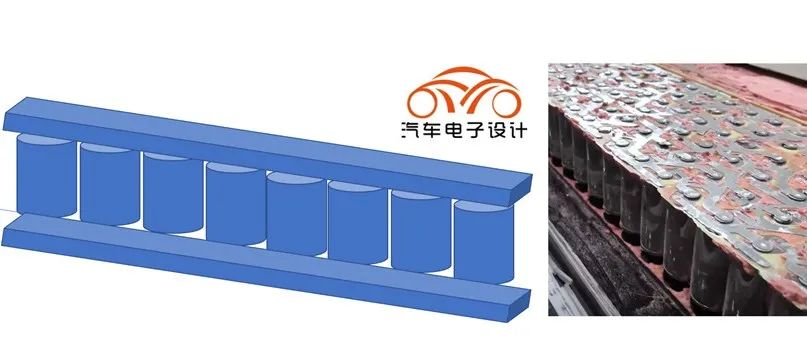Author: Zhu Yulong
In the latest video of Mr. Munro, the 4680 battery cell design is the main topic. According to the communication with the supplier, the version we see now is in the lock-in phase and adjusting materials and design. This iteration is an important design direction for Tesla.
The iteration of Tesla’s battery system is based on cylindrical cells:
-
18650: At that time, there were no particularly good options, and the energy at that time far exceeded their peers, and the vehicle price remained high. The qualified supplier was Panasonic.
-
21700: This was a key breakthrough at the time, enabling production at $35,000 and significantly increasing production capacity. The qualified suppliers were Panasonic and LG.
-
4680: This is the important strategic means for Tesla to do self-research and production and define the next generation of batteries. Potential suppliers include Tesla’s own factories, Panasonic, LG, SDI, CATL, EVE Energy and other Chinese suppliers.
This article mainly discusses the disassembly of the 4680 module.
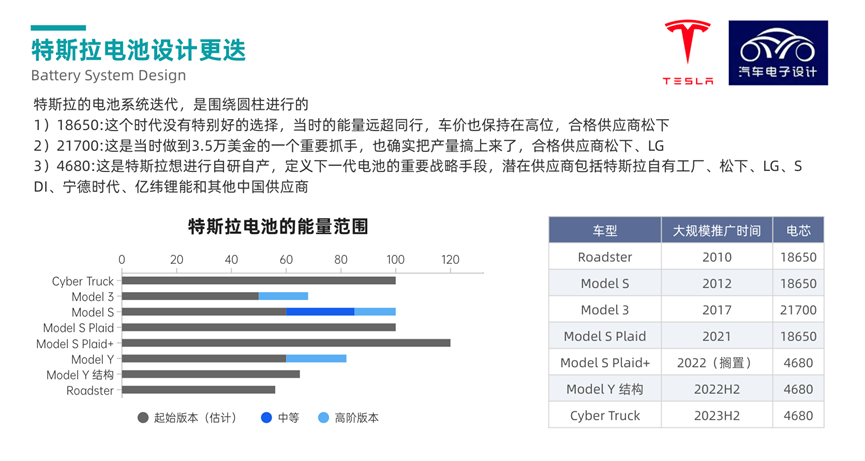
In the module design, we can see that:
-
Tesla abandoned the method of aluminum wire welding on the 4680, and used laser welding to connect the Busbar and the positive and negative electrodes of the battery cell.
-
The top and bottom of the module are complete spaces, and the whole processing speed will be faster.
-
Tesla adopts the top integrated sampling wire mode and introduces CCS-like structure to improve manufacturability and reliability.
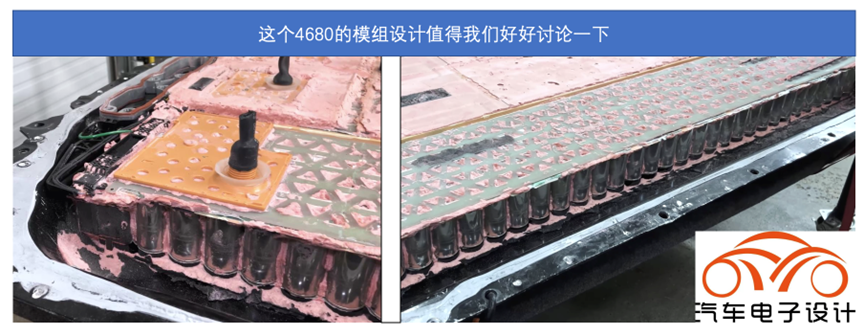
Electrical design of 4680 module
In Tesla’s module design patent diagram, some differentiated things have been revealed, which have been systematically displayed in this disassembly by Mr. Munro.
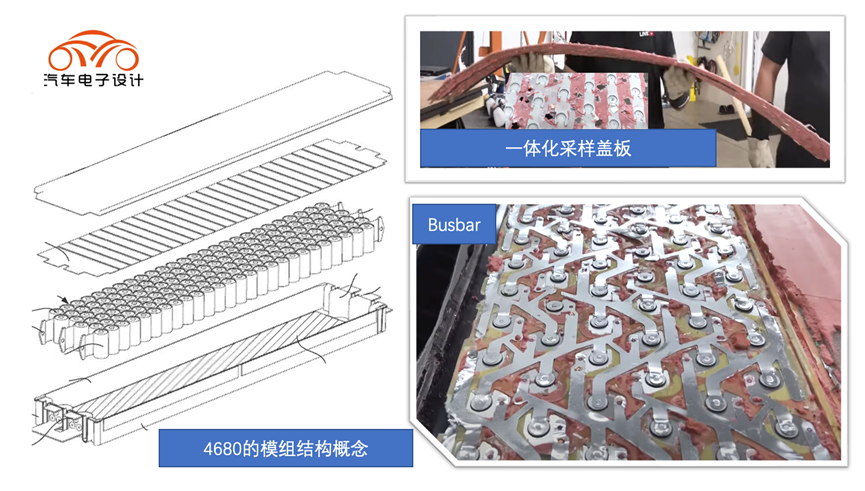
The parallel structure of the bus bar design is a bit strange. From the current count, there are 9 protruding battery cells and 6 rows, which are circled in a triangle. In the figure below, the yellow box represents a close-up and the green box represents the battery cell I circled. Then I circled the entire bus bar structure and labeled it, so it is divided into two parts here:
- Battery cell connection point, which can be seen marked with laser welding.- Connection between busbars is designed with a large support piece that connects the busbar and battery cells.
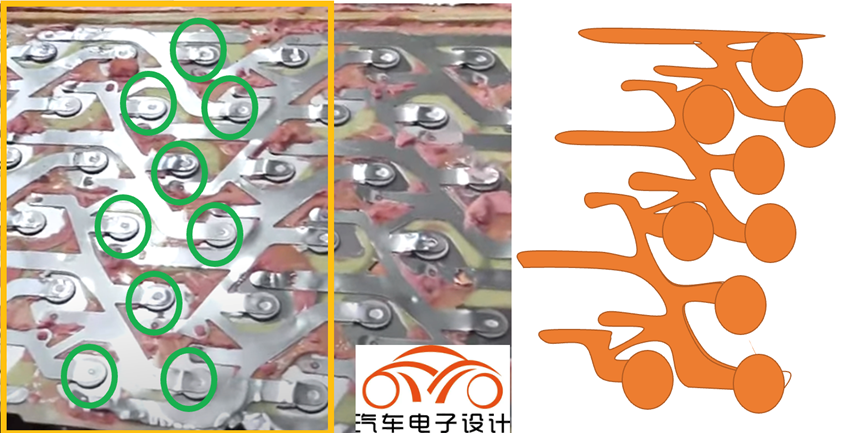
As shown in the following figure, in order to fix the structure, a branched fixing part is used here to fix the busbars. The connection between the busbars is configured with insulating materials, fully considering connecting the busbars in a 3D range.
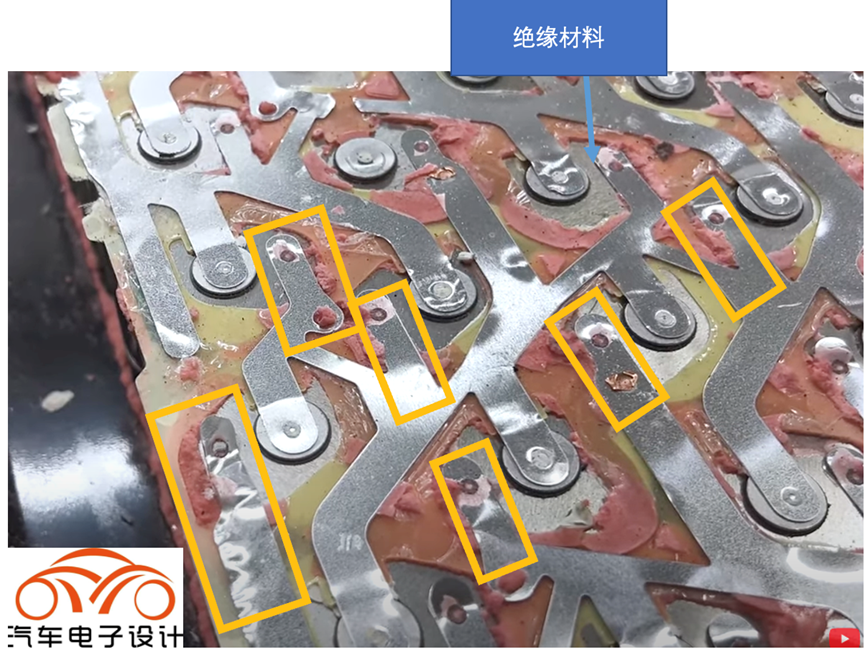
From the perspective of welding points, Tesla abandoned the aluminum wire bonding welding method on the busbars. One possible reason is that the current carrying capacity of the entire connection has increased. In terms of reliability and volume utilization, this 3D composite method is more efficient and reliable.
At the same time, the voltage lines of the battery cells are directly welded to the busbars using copper strips. Nine parallel battery cells output one voltage sampling point, and the concept of CCS is used here to achieve high integration of the cover on the 4680 cell, which integrates temperature sensors internally.
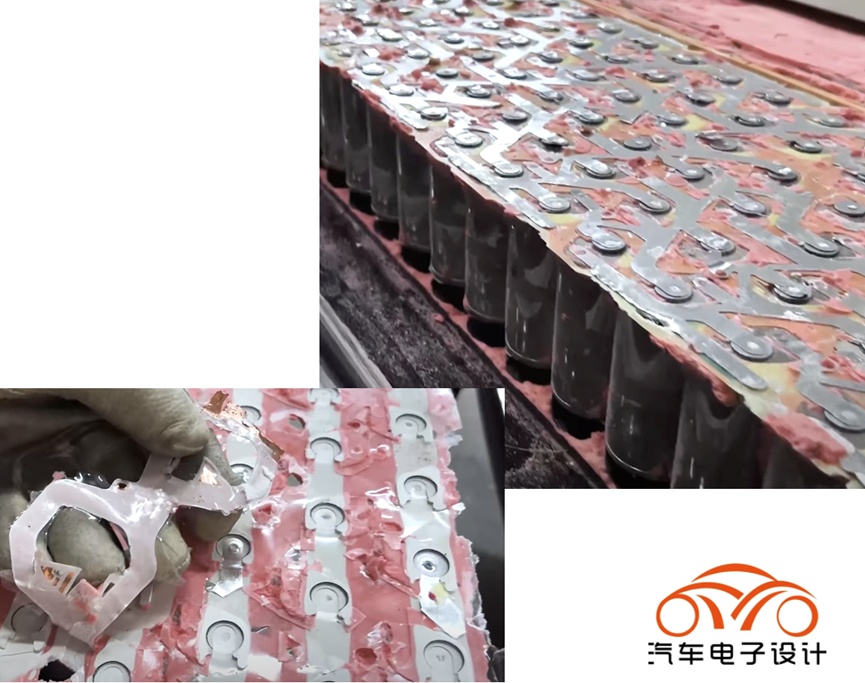
Overall, this design puts all the difficulties on the supplier, which means the supplier needs to provide a bottom cover and a top cover, and then place the battery cells into them one by one through mechanical means.
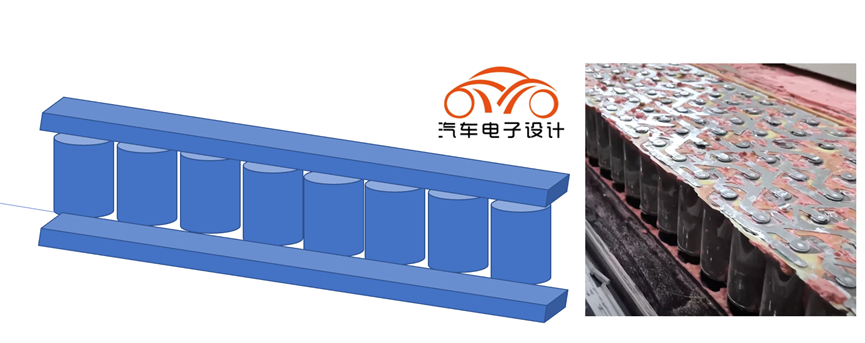
Two Ends of the Framework
In order to facilitate current connection, the output connection at both ends of the large frame module is connected to the output pole piece through laser welding, and the output pole is supported by the plastic substrate of the frame. The entire electrical part is still supported by the orange plastic board, and the communication line is connected to the BMS through the top pipeline.
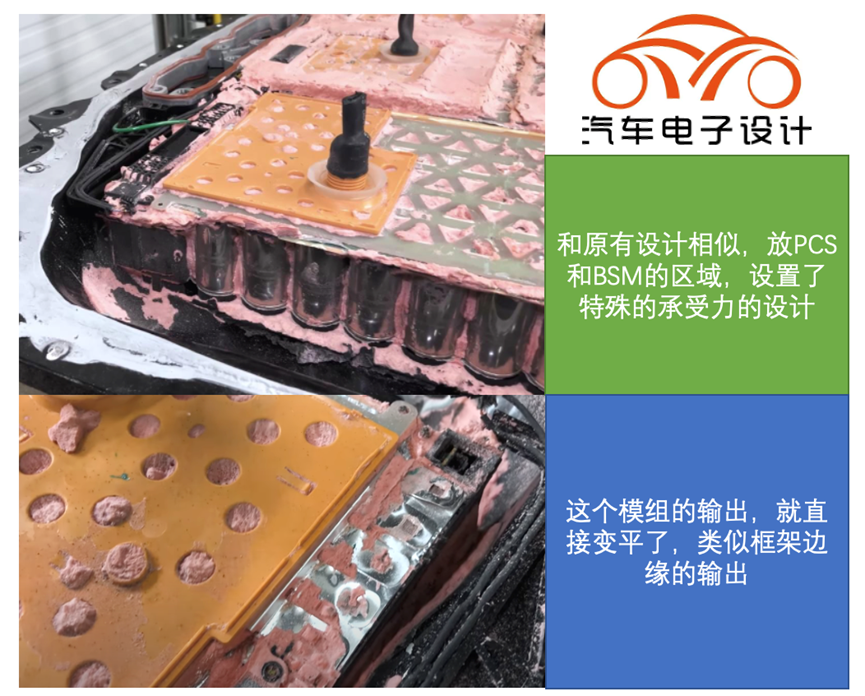
There is an insulating cover here that can protect the output part of the module, achieving enhanced insulation for electrical isolation.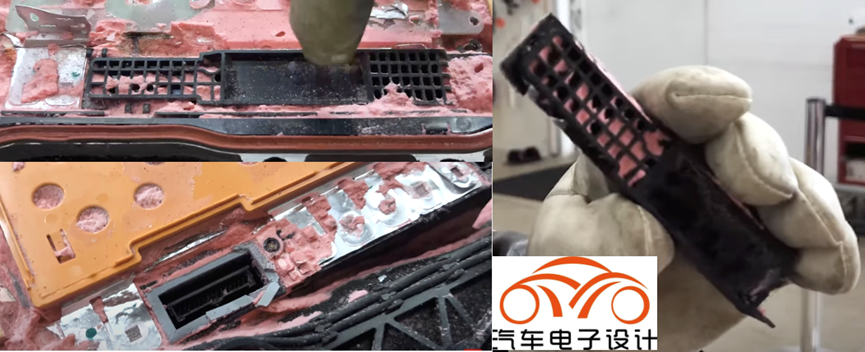
Summary: Overall, the design of the 4680 is aimed at simplifying the assembly process by integrating many parts as much as possible and outsourcing them to suppliers, further improving the assembly speed of 4680 cells into battery packs.
This article is a translation by ChatGPT of a Chinese report from 42HOW. If you have any questions about it, please email bd@42how.com.
